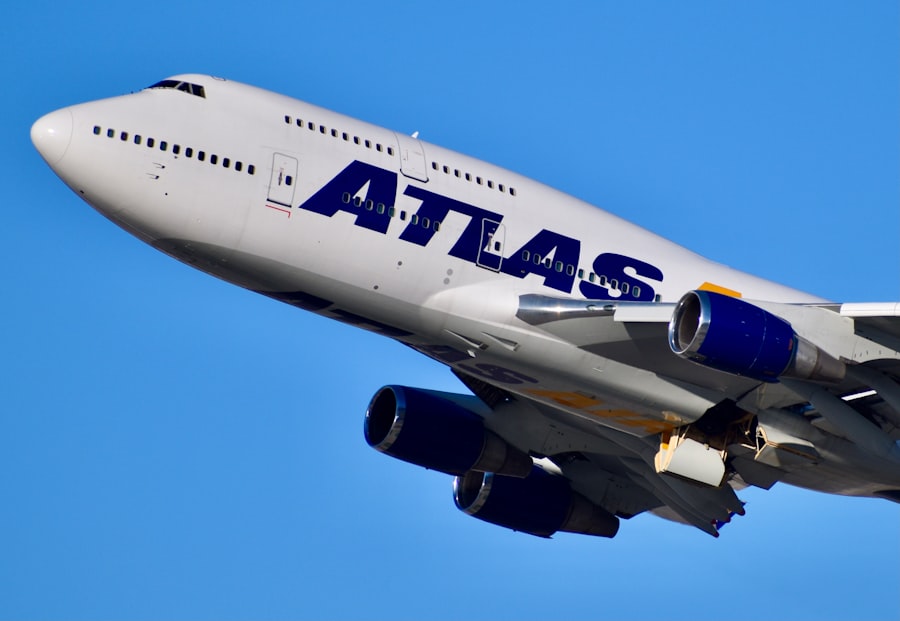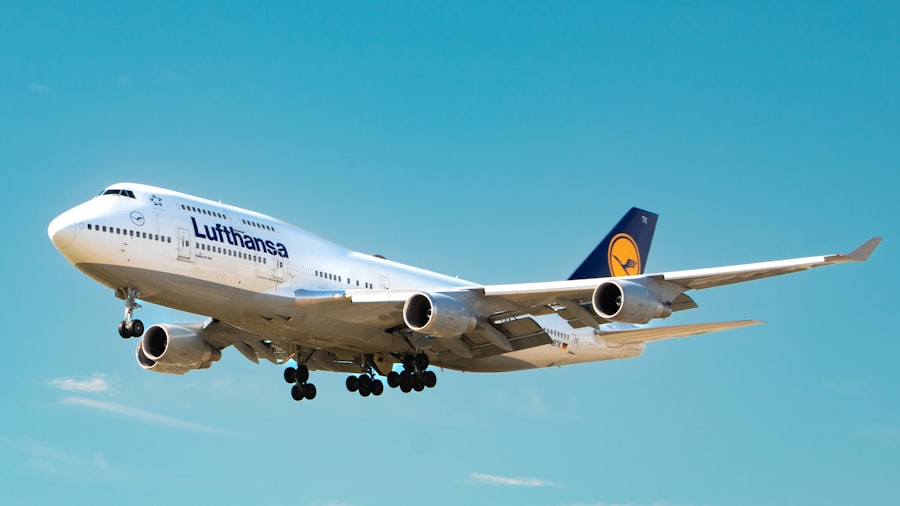The Boeing 747, often referred to as the “Jumbo Jet,” made its first flight on February 9, 1969, and has since become one of the most iconic aircraft in aviation history. The inception of the 747 was driven by a need for larger aircraft capable of accommodating the growing demand for air travel in the post-World War II era. The vision for the 747 was spearheaded by Boeing’s then-CEO, William Allen, and chief engineer, Joe Sutter.
They recognized that the burgeoning airline industry required a new class of aircraft that could transport more passengers over longer distances at a lower cost per seat. The development of the 747 was not without its challenges. Boeing faced significant financial risks and technical hurdles, including the need to design a new, larger wing and fuselage.
The project was ambitious, with the goal of creating a wide-body aircraft that could carry up to 400 passengers. The first prototype was built in a record time of just 29 months, a feat that showcased Boeing’s engineering prowess and commitment to innovation. The aircraft’s distinctive humpbacked shape, which housed a second deck for premium seating, quickly became its trademark.
The 747 was officially introduced into commercial service by Pan American World Airways (Pan Am) on January 22, 1970, marking a new era in air travel.
Key Takeaways
- The Boeing 747, also known as the “Queen of the Skies,” was first introduced in 1969 and revolutionized long-haul air travel.
- With its distinctive humpback design and spacious interior, the Boeing 747 set new standards for comfort and luxury in air travel.
- The Boeing 747 had a significant impact on aviation by making long-distance travel more accessible and affordable for passengers.
- The iconic aircraft has been featured in numerous films, TV shows, and music videos, solidifying its place in popular culture.
- Over the years, the Boeing 747 has evolved with technological advancements and remains a symbol of innovation and excellence in aviation.
Design and Features of the Boeing 747
The design of the Boeing 747 is a marvel of engineering that combines functionality with aesthetic appeal. Its most recognizable feature is the distinctive upper deck, which not only enhances passenger capacity but also provides a unique flying experience. The aircraft’s wingspan is another remarkable aspect; the wings are designed with a high aspect ratio to improve fuel efficiency and aerodynamic performance.
The wing structure incorporates advanced materials and technologies, allowing for greater lift and reduced drag during flight. Inside, the Boeing 747 offers a range of configurations tailored to different airlines’ needs. Depending on the model and airline preferences, the cabin can accommodate anywhere from 400 to over 600 passengers.
The spacious interior allows for various seating arrangements, including economy, business, and first-class sections. Additionally, the aircraft is equipped with state-of-the-art avionics and navigation systems that enhance safety and operational efficiency. Features such as advanced autopilot systems and fly-by-wire technology have made the 747 not only a comfortable ride but also a highly reliable one.
The Impact of the Boeing 747 on Aviation

The introduction of the Boeing 747 revolutionized air travel in numerous ways. It significantly lowered the cost of air travel by increasing passenger capacity and reducing operating costs per seat mile. This democratization of air travel opened up international routes to millions who previously could not afford to fly.
Airlines could now offer competitive fares on long-haul flights, leading to an explosion in global tourism and business travel. Moreover, the Boeing 747 played a crucial role in shaping airport infrastructure around the world. Airports had to adapt to accommodate the larger aircraft, leading to the construction of longer runways and more extensive terminal facilities.
The aircraft’s ability to operate on both short and long-haul routes also encouraged airlines to expand their networks, connecting cities that were previously isolated from international air travel. This expansion fostered economic growth in many regions, as increased connectivity facilitated trade and cultural exchange.
The Boeing 747 in Popular Culture
| Movie/TV Show | Year | Role of Boeing 747 |
|---|---|---|
| Airplane! | 1980 | Featured in the comedic disaster film |
| Lost | 2004-2010 | Crash of Oceanic Flight 815, a Boeing 747 |
| Die Hard 2 | 1990 | Used as a plot device for terrorists taking over an airport |
| Snakes on a Plane | 2006 | Setting for the action-horror film |
The Boeing 747 has transcended its role as merely a mode of transportation; it has become a cultural icon featured in numerous films, television shows, and literature. Its imposing size and unique design have made it a favorite subject for filmmakers looking to depict air travel’s grandeur or drama. Movies like “Airport” (1970) and “United 93” (2006) showcase the aircraft’s significance in both everyday life and extraordinary circumstances.
In addition to film, the Boeing 747 has made appearances in music videos and advertisements, often symbolizing luxury and adventure. Its image evokes feelings of wanderlust and exploration, making it an ideal backdrop for stories about travel and discovery. The aircraft has also been used in significant historical events; for instance, it served as Air Force One for several U.S.
presidents, further cementing its status as a symbol of power and prestige.
The Evolution of the Boeing 747
Over the decades, the Boeing 747 has undergone several iterations and improvements, adapting to changing market demands and technological advancements. The original model, known as the 747-100, was soon followed by variants such as the 747-200, which offered increased range and payload capacity. The introduction of the 747-300 brought about an extended fuselage and larger wing area, enhancing passenger comfort and operational efficiency.
The most significant evolution came with the introduction of the Boeing 747-400 in the late 1980s. This model featured advanced wing designs with winglets that improved fuel efficiency by reducing drag. It also incorporated modern cockpit technology with digital displays and improved avionics systems that enhanced safety and ease of operation.
The latest variant, the 747-8, introduced in 2012, further pushed the boundaries with its larger size, increased fuel efficiency, and advanced passenger amenities. Each evolution reflects Boeing’s commitment to innovation while maintaining the core characteristics that have made the 747 a beloved aircraft among airlines and passengers alike.
The Legacy of the Boeing 747

The legacy of the Boeing 747 is profound and multifaceted. It has not only transformed air travel but has also influenced global culture and commerce. As one of the first wide-body jets, it set a precedent for future aircraft designs that prioritize passenger comfort while maximizing efficiency.
The aircraft’s ability to connect distant parts of the world has fostered international relationships and cultural exchanges that continue to shape our global society. Moreover, the Boeing 747 has left an indelible mark on aviation history through its longevity and adaptability. Even as newer aircraft models emerge with advanced technologies, many airlines continue to operate older versions of the 747 due to their reliability and capacity.
This enduring presence in commercial aviation speaks volumes about its design excellence and operational versatility. The aircraft has become synonymous with long-haul travel, representing not just a means of transportation but an experience that connects people across continents.
The Future of the Boeing 747
As we look toward the future, the Boeing 747 faces challenges amid evolving aviation trends such as sustainability and changing passenger preferences. With increasing emphasis on reducing carbon emissions and improving fuel efficiency, airlines are exploring more environmentally friendly alternatives like smaller twin-engine jets that can operate efficiently on long-haul routes. This shift poses questions about the continued relevance of large four-engine aircraft like the 747 in an industry increasingly focused on sustainability.
However, there remains a niche market for the Boeing 747 in cargo transport and specialized operations. Its large cargo capacity makes it an invaluable asset for freight carriers who require efficient transport solutions for oversized or high-volume shipments. Additionally, some airlines may continue to operate passenger versions for specific routes where demand justifies their use.
While commercial production of new models may cease, the legacy of the Boeing 747 will likely endure through its continued operation in various capacities around the globe.
The Boeing 747: A Timeless Legend
The Boeing 747 stands as a testament to human ingenuity and ambition in aviation history. Its design broke barriers in terms of capacity and range while setting new standards for comfort in air travel. As it continues to serve both passengers and cargo operators worldwide, it remains an enduring symbol of progress in aviation technology.
The emotional connection many people have with the Boeing 747 is palpable; it represents not just a mode of transportation but also memories of journeys taken across vast distances—family vacations, business trips, or adventures into unknown territories. As we reflect on its storied past and uncertain future, one thing is clear: the Boeing 747 will always hold a special place in our hearts as a timeless legend that changed how we view travel forever.


